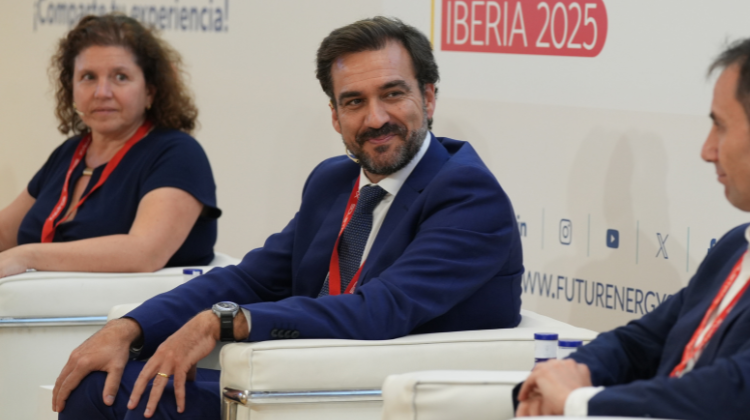During FES Iberia 2025, Carlos Moro, Chief Growth Officer of Five Infinitum, stressed the urgent need to adapt Spain’s energy planning and regulatory processes to the exponential growth of data centres. He believes this industry will be key to consolidating energy demand and stabilising the renewable energy system.
The accelerated growth of data centres is forcing a rethinking of Spain‘s energy planning and administrative procedures. This was one of the main conclusions shared by Carlos Moro, Chief Growth Officer of Five Infinitum, during his participation in the Panel 7: Boosting Demand and New Opportunities: PPAs, Data Centres and Public Policy, held at FES Iberia 2025. The event brought together executives, developers, and public authorities to analyse the future of energy demand and the renewable transition.
Moro emphasised that data centres are expanding at an unprecedented pace, yet regulations and administrative processes are not keeping up. “What is clear is that this is a sector growing so quickly that we need to develop administrative processes just as fast,” the executive points out.
At Five Infinitum, a company majority-owned by Recurrent Energy, there is concern over the gap between the growth capacity of data centres and the flexibility of Spain’s regulatory framework. Moro believes it is essential to shorten planning cycles, especially when long timelines are no longer compatible with the market’s needs. “When planning periods are so long, we need to talk about shorter cycles, which allow us to realistically adapt to what the data centre market demands,” he explains.
Capacity visibility and renewable energy linkage
Moro highlights the need for clearer and more up-to-date information regarding available capacity in the power grids. “It’s also important to have visibility of the availability of grid capacity. This is clearer for the transmission network, but less so for distribution,” he stresses. The lack of transparency limits strategic decision-making and complicates new investments.
The link between data centres and renewable energy is another key factor highlighted by Moro. In his view, developing this digital infrastructure cannot be detached from the energy transition. “A data centre project can no longer exist without being supplied by renewable energy,” he emphasises. This connection responds to both cost factors and the growing pressure to meet ESG criteria and European sustainability regulations.
Given this context, Moro believes it is not far-fetched to consider autonomous energy supply models for some data centres, where their own renewable generation, combined with storage systems, could secure independent supply. “We may consider a scenario where a data centre is powered autonomously and off-grid,” he states.
Spain’s digital hub and the impact on the grid
Another key point in Moro’s intervention is the location of projects in industrial land, which significantly reduces social and environmental impacts and should facilitate administrative processing. “Most data centre developments are located on industrial sites, which greatly helps to mitigate the impact,” he explains. According to Moro, this justifies the need for a differentiated and faster regulatory approach for such strategic infrastructure.
Spain is currently positioning itself as one of the most attractive markets for data centre development outside Europe’s traditional hubs. “Outside Frankfurt, London, Amsterdam, Paris, and Dublin, Milan and Madrid are now the most attractive locations,” Moro affirms. The country’s renewable generation capacity and technological potential place Spain in a privileged position to lead this transformation.
The expansion of data centres not only represents an opportunity for investment and economic growth but also offers a strategic tool to stabilise the power grid. The continuous and predictable demand from data centres provides support to a system increasingly reliant on variable renewable energy, such as solar and wind. “What has clearly driven electricity prices down are renewables,” Moro points out, underlining the need to balance generation with demand.
The challenge, he warns, is to ensure that regulation and infrastructure keep pace with this transformation without deterring investment. The key will be a joint planning effort between the public and private sectors, making the most of available land, developing efficient connection nodes, and accelerating the processing of projects linked to digital growth and the decarbonisation of the economy.
Watch the full panel:
